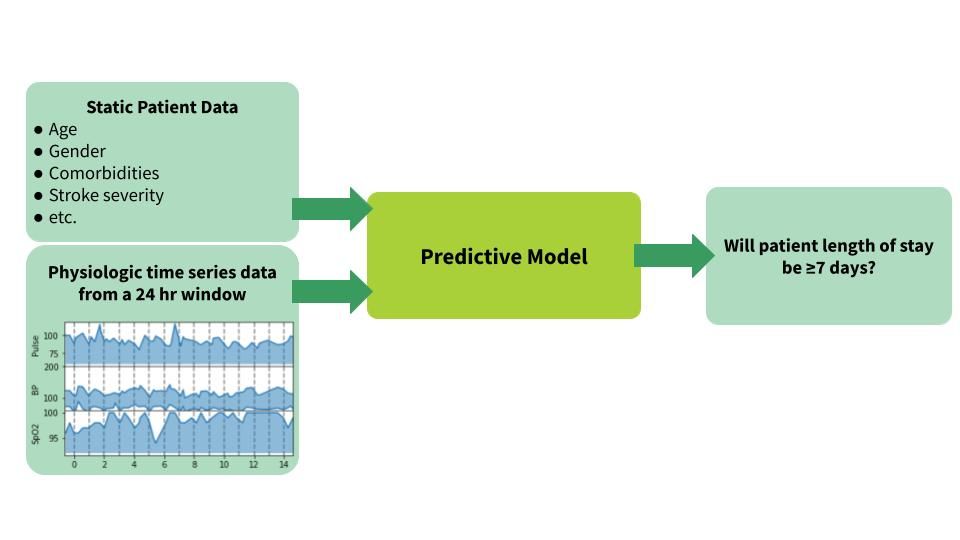Predicting Length of Stay For Acute Stroke Patients Using 24 Hours Of Hemodynamic Features
Team: Precision Care Medicine: Emerald
- Program: Biomedical Engineering
- Course:
Project Description:
During the acute stroke period, there is a disruption of the blood-brain barrier and cerebral blood flow autoregulation, which results in a direct relationship between hemodynamics and brain perfusion. Improved understanding of the relationship between hemodynamic trends and clinical outcomes could provide predictive insight. The goal of this work was to predict hospital length of stay using the patient’s demographic information and hemodynamic profile. We conducted a retrospective cohort study for stroke patients admitted to an urban comprehensive stroke center between 2016-2019. Data included hemodynamic parameters such as pulse, temperature, and blood pressure as well as demographics and comorbidities. Our primary outcome was length of stay greater than or equal to 7 days. Using an XGBoost classifier we obtained an AUC of 0.840, with the optimal operating point achieving a sensitivity of 0.73 and specificity of 0.83. The precision-recall curve for this model had an AUC of 0.768. The application of this model could augment the care coordination process and provide a categorization of patient recovery trajectory.
Project Photo:
The design image depicts the project pipeline. Static patient data that is available at admission is combined with derived features from physiologic times series data from the first 24 hours of admission. Combined feature space is used to train models to predict patient length of stay.
Project Poster
Open full size poster in new tab (PDF)
Project Post Summary:
During the acute stroke period, there is a disruption of the blood-brain barrier and cerebral blood flow autoregulation, which results in a direct relationship between hemodynamics and brain perfusion. Improved understanding of the relationship between hemodynamic trends and clinical outcomes could provide predictive insight. The goal of this work was to predict hospital length of stay using the patient’s demographic information and hemodynamic profile. We conducted a retrospective cohort study for stroke patients with data that included hemodynamic parameters such as pulse, temperature, and blood pressure as well as demographics and comorbidities. Our primary outcome was length of stay greater than or equal to 7 days. The ROC and precision recall curves for the models are presented with the XGBoost showing the best performance. Models that used the first 24, 48, or 72 hours of patient data were built. The application of these models could augment the care coordination process and provide a categorization of patient recovery trajectory.



